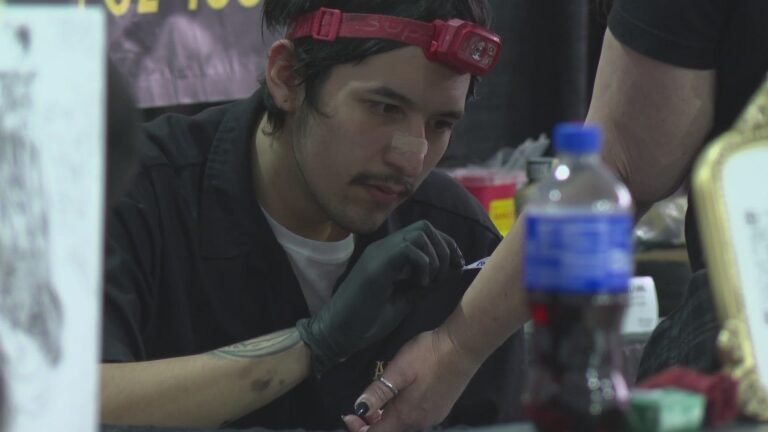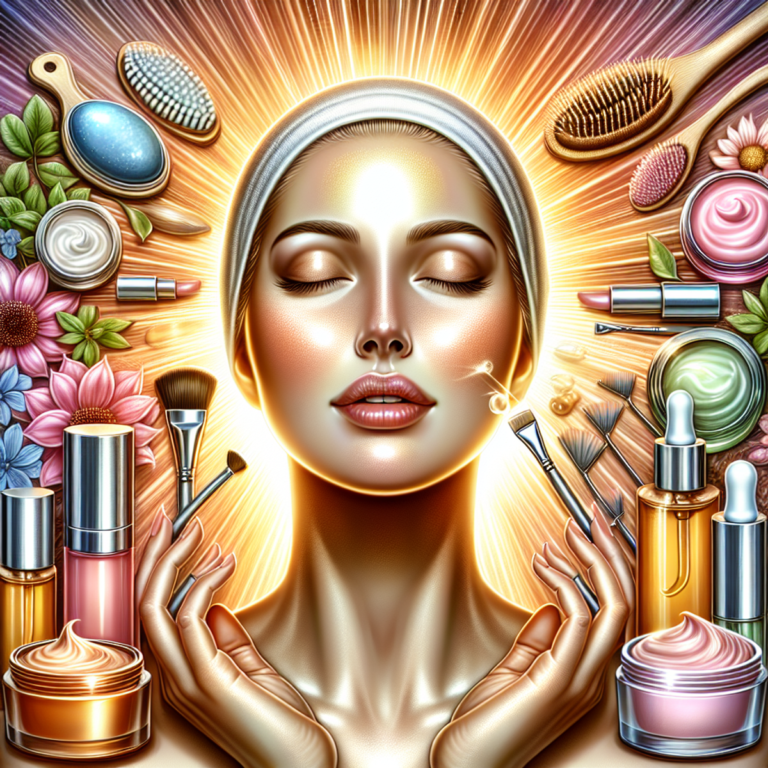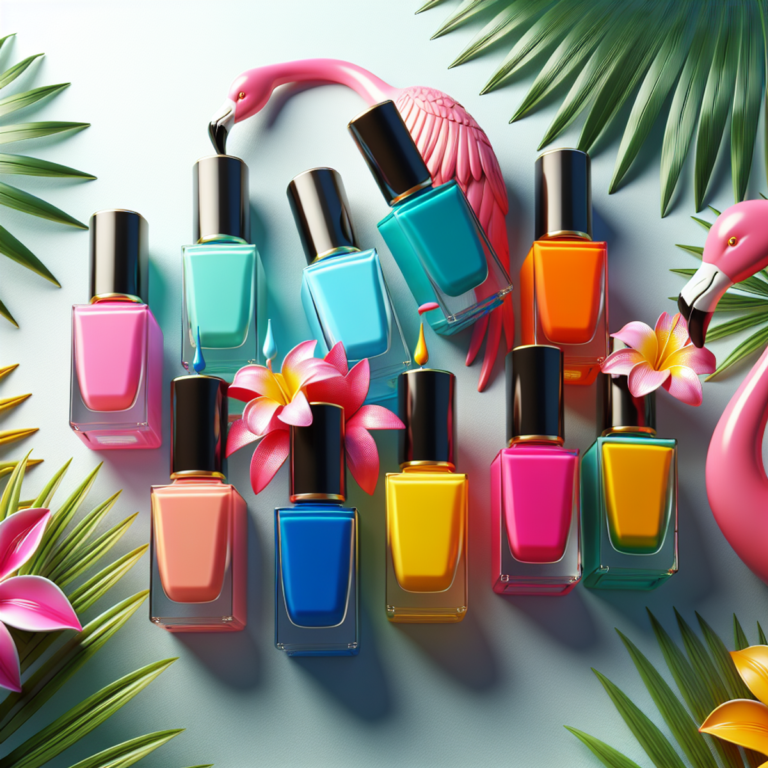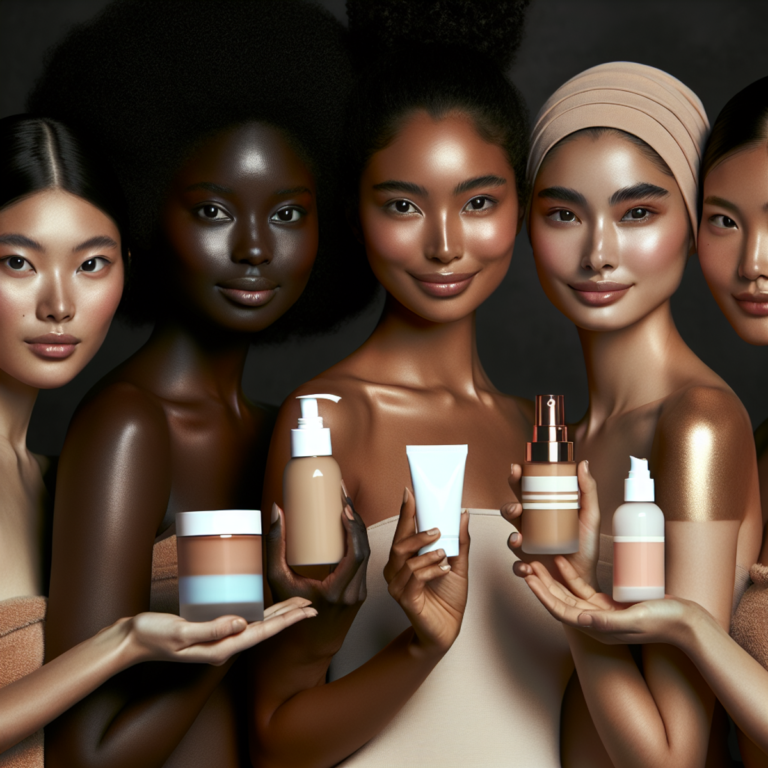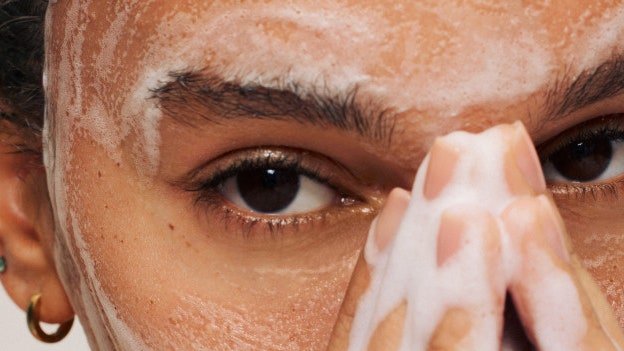This is how AI and the metaverse are changing the face of beauty

Introduction
The beauty industry has always been changing, using technology to make customers happier. From skincare to makeup, technology has made beauty routines better and changed how people buy beauty products. And now, with AI (Artificial Intelligence) and the metaverse, there’s a whole new way to make beauty experiences even better.
- AI and the metaverse have the potential to completely change how we think about and enjoy beauty. These technologies can bring new ideas, competition, and change to the beauty industry.
In this article, we’ll look at how AI, the metaverse, and beauty all come together. We’ll talk about how they affect how people connect with each other, what it’s like to be in a virtual world, and what might happen in the future. By understanding all of this, we can see how these new technologies are changing what people think is beautiful and making the beauty industry more welcoming and exciting for everyone.
1. Reshaping Customer Interactions: The Power of AI
AI technology is revolutionizing the beauty industry, transforming how customers interact and enhancing the overall shopping experience. Through the use of AI-driven chatbots and virtual assistants, beauty brands are reshaping how customers seek advice and make purchasing decisions.
AI-powered chatbots
Chatbots have become a common feature on beauty brand websites and social media platforms. These virtual assistants leverage advanced language understanding and machine learning algorithms to provide personalized recommendations, answer customer queries, and offer real-time product information.
Personalized recommendations
Data analysis and machine learning play a crucial role in enabling personalized recommendations for skincare and makeup products. By analyzing customer data such as skin type, concerns, preferences, and purchase history, AI algorithms generate tailored product suggestions that meet individual needs. This level of personalization enhances the customer experience by saving time and increasing the chances of finding products that truly resonate with them.
One notable example of successful AI implementation is Sephora’s Virtual Artist feature. This augmented reality (AR) tool uses facial recognition technology to allow customers to virtually try on different makeup looks using their smartphones. By overlaying virtual cosmetics onto their faces in real-time, customers can experiment with different shades, finishes, and styles before making a purchase decision.
However, it is important to consider the ethical implications of using AI in the beauty industry. One concern is algorithmic bias, particularly in shade matching algorithms. If not properly calibrated, these algorithms may reinforce biases by excluding certain skin tones or favoring specific demographics. To ensure fairness and inclusivity in AI-driven beauty technologies, brands should prioritize diversity in data collection and continuously test algorithms for potential biases. Being transparent about how AI systems function is crucial in establishing trust with consumers.
To mitigate these concerns, the industry can adopt algorithmic bias detection and mitigation best practices to reduce potential harm. These practices include diverse data collection, continuous algorithm testing, and regular audits to identify and rectify any biases.
AI is fundamentally changing how customers interact in the beauty industry by providing personalized recommendations and virtual try-on experiences. While ethical concerns must be addressed, AI has the potential to promote inclusivity and empower customers to make informed decisions about their beauty products. As AI technology continues to advance, we can expect even more innovative uses that redefine our interactions with beauty brands.
2. Virtual Experiences: Trying On Makeup in the Metaverse
The metaverse is changing how customers experience beauty products. It’s an immersive platform that uses augmented reality (AR) filters and virtual try-on features to let users test out different makeup looks in a digital world that feels like the real thing.
Immersive Try-On Experiences
One of the key features of the metaverse is its ability to provide realistic try-on experiences for makeup products. Here’s how it works:
- Users select a makeup item they’re interested in trying.
- Using their device’s camera, an AR filter applies the chosen product to their face in real-time.
- Users can see how the makeup looks on them from different angles and under various lighting conditions.
- If they’re satisfied with the result, they can make a purchase directly through the app or website.
This virtual try-on experience offers several benefits:
- Convenience: Customers can try on multiple products without having to visit a physical store or deal with messy testers.
- Risk-Free: Since it’s all happening digitally, there’s no need to worry about allergies, skin reactions, or wasting money on products that don’t suit them.
- Exploration: The metaverse encourages users to step out of their comfort zones and experiment with new makeup looks they might not have considered before.
Advantages for Customers and Brands
Virtual makeup try-on technologies bring several benefits to both customers and beauty brands:
For Customers:
- No Commitment: Trying out products virtually allows customers to see if they like them before making a purchase commitment.
- Informed Decisions: By being able to test different options, customers can make more informed choices based on how the products actually look on them.
- Confidence Boost: Finding the right makeup can boost self-confidence. Virtual try-on experiences help customers discover products that enhance their features and make them feel good about themselves.
For Brands:
- Increased Engagement: Interactive features like virtual try-on attract and hold customers’ attention for longer periods, increasing brand engagement.
- Data Insights: Through these technologies, brands can gather valuable data on customer preferences and behaviors, such as which products are most popular or what shades are in demand.
- Personalization Opportunities: Armed with this data, brands can personalize recommendations and offers to individual customers, creating a more tailored shopping experience.
Future Potential
The metaverse is still evolving, and there’s plenty of room for innovation in virtual beauty experiences. Here are some potential developments we might see in the future:
- Multi-Sensory Simulations: Currently, virtual try-ons focus mainly on visual aspects. However, there’s potential for incorporating other senses like smell and texture into the experience. This would give users a more complete understanding of how a product feels and behaves on their skin.
- Social Sharing Features: As social media continues to be a significant part of our lives, integrating sharing options within virtual beauty apps could allow users to get feedback from friends or influencers before making a purchase.
- Customization Tools: Offering customization options where users can mix and match different shades or finishes to create their own unique products could be another way to enhance the virtual try-on experience.
By continuously improving and innovating these virtual experiences, the beauty industry aims to provide consumers with seamless transitions between physical and digital touchpoints throughout their purchase journey.
3. Shiseido: Leading the Way in Combining AI, AR, and the Metaverse
Shiseido, a top beauty conglomerate, has been at the forefront of using cutting-edge technologies like AI, AR, and the metaverse to redefine customer experiences and drive innovation across its brand portfolio. Let’s explore how Shiseido is leading the way in combining these game-changing technologies.
Bringing Together AI, AR, and the Metaverse
Shiseido has strategically brought together AI, AR, and metaverse technologies to provide immersive and personalized experiences to its customers. By using these tools in tandem, Shiseido has completely changed how people interact with beauty products and connect with the brand.
Innovations in Makeup and Skincare
Shiseido’s makeup and skincare brands have taken the lead in introducing innovative ideas that demonstrate the powerful use of AI, AR, and metaverse technologies. These ideas are not just abstract concepts but are supported by real-world evidence and positive feedback from customers. For instance, Shiseido’s adoption of DNA-based technologies within their skincare range showcases their commitment to leveraging cutting-edge advancements for tangible results.
Tangible Results and Customer Feedback
The incorporation of AI, AR, and metaverse technologies across Shiseido’s brand portfolio has produced measurable outcomes that prove their effectiveness. Furthermore, customer feedback shows how valuable and influential these advanced technology integrations are in improving customer experiences. These results can be witnessed across various aspects of the customer journey, as evidenced by the complete guide to beauty tech which highlights the transformative impact of these technologies on the beauty industry.
By smoothly integrating AI, AR, and the metaverse into its operations, Shiseido has established an impressive example for other beauty companies looking to adopt technological innovation for long-term success.
This integration has allowed Shiseido to stay ahead in an increasingly competitive market by providing distinctive and captivating experiences that align with the preferences of today’s consumers.
4. NFTs and the Metaverse: A New Frontier for Gen Z Engagement in Beauty
Non-Fungible Tokens (NFTs) have become a major trend in the digital economy, catching the eye of Gen Z consumers and changing different industries. In the beauty industry, NFTs offer an exciting opportunity for involvement and self-expression in the metaverse. Let’s see how NFTs are transforming the beauty industry and creating special chances for both brands and consumers.
Explaining the Concept of NFTs
NFTs are unique digital assets that can represent ownership or proof of authenticity for a wide range of digital content, including images, videos, music, and more. Unlike cryptocurrencies such as Bitcoin or Ethereum, which can be exchanged on an equal basis, NFTs cannot be divided and copied. This uniqueness is what makes them valuable.
The Growing Influence of NFTs among Gen Z
Gen Z, the generation born into the internet age, has fully embraced NFTs as a way to show who they are and support their favorite creators. They see NFTs as a way to own exclusive digital items that hold cultural importance. With their deep knowledge of digital platforms and online communities, Gen Z is leading the way in using NFTs across different industries, including beauty.
Unique Opportunities for Beauty Brands with NFTs
NFTs present beauty brands with exciting chances to connect with consumers in the metaverse and create limited-edition virtual collectibles that resonate with Gen Z. Here are some ways beauty brands can use NFTs:
- Limited-Edition Virtual Collectibles: Beauty brands can create exclusive virtual makeup collections or skincare products as NFTs. These limited-edition items can be traded, collected, or displayed virtually within the metaverse. By offering unique digital assets through NFTs, brands can tap into the desire for rarity and exclusivity among Gen Z consumers.
- Exclusive Metaverse Experiences: NFTs can give holders access to exclusive metaverse experiences, such as virtual events, workshops, or tutorials hosted by beauty influencers or industry experts. This allows brands to create a sense of community and connection with their audience, fostering loyalty and engagement.
Shiseido’s Innovative Use of NFTs
Shiseido, known for its forward-thinking approach, has fully embraced NFTs as a way to connect with Gen Z beauty enthusiasts. The brand has worked with artists and creators to release limited-edition NFT collections that showcase the combination of beauty and digital art. These NFTs not only serve as collectibles but also provide access to virtual events where participants can interact with Shiseido’s products and learn new makeup techniques.
By using NFTs, Shiseido has created a unique system that allows Gen Z consumers to express themselves creatively, connect with like-minded individuals, and explore the brand’s offerings in an innovative and immersive way.
NFTs are changing the beauty industry by offering new ways for self-expression and involvement in the metaverse. As Gen Z continues to shape consumer trends, beauty brands have an opportunity to embrace this digital revolution by creating exclusive virtual collectibles and providing unique metaverse experiences. Shiseido’s pioneering efforts in using NFTs show the potential for brands to build a sense of community and empower young beauty enthusiasts through these emerging technologies.
Anticipating the Future: Synergies Ahead for AI, the Metaverse, and Beauty
As we look ahead to the future trends in the beauty industry, it becomes evident that the convergence of AI, the metaverse, and beauty will bring forth synergistic growth areas with transformative potential. Here are some key insights:
1. Personalized Beauty Solutions
With advanced AI algorithms and data analytics, beauty brands can offer highly personalized product recommendations and skincare solutions tailored to individual needs. The integration of AI in virtual try-on experiences within the metaverse will enable users to experiment with a wide range of products in a hyper-personalized manner.
2. Enhanced Virtual Experiences
As the metaverse evolves, we anticipate a seamless integration of AI technologies to create more immersive and lifelike virtual experiences. This could include realistic simulations of texture, scent, and even environmental factors, providing consumers with a multi-sensory try-on process that closely mirrors real-life experiences.
3. Ethical Considerations and Trust
As these technologies advance, there is a growing need for responsible innovation that prioritizes user trust and data privacy. Beauty brands must ensure transparency in their use of AI and metaverse technologies while actively addressing concerns related to data security and algorithmic bias. A recent study by Deloitte highlights the significance of these ethical considerations in retail industry disruptions, emphasizing the importance of building trust with consumers.
4. Agile Adaptation
Embracing an agile mindset will be crucial for beauty brands as they navigate this tech-driven landscape. The ability to adapt swiftly to evolving consumer preferences and technological advancements will determine their competitiveness in the market. To successfully navigate these changes, businesses can refer to a roadmap for digital transformation, such as the one provided by Presidio here.
The future convergence of AI, the metaverse, and the beauty industry holds immense potential for redefining customer experiences and driving innovation. By prioritizing ethical considerations, embracing personalization, and remaining adaptable in this ever-evolving landscape, beauty brands can position themselves at the forefront of industry transformation.
Conclusion
The beauty industry is on the brink of a transformative revolution, fueled by the convergence of AI, the metaverse, and emerging technologies. As we look ahead, it becomes increasingly clear that the future success of this industry lies in its ability to harness the full potential of these innovations while staying true to its core values of inclusivity and self-expression.
Beauty brands have a unique opportunity to leverage AI-powered solutions and immersive metaverse experiences to enhance customer interactions and drive engagement. By embracing these technologies, brands can provide personalized recommendations, virtual try-on tools, and interactive experiences that empower individuals to explore and express their unique beauty preferences.
It is essential for beauty enthusiasts to explore the latest AI-powered beauty apps and immersive metaverse experiences offered by forward-thinking brands. These advancements can unlock new possibilities for discovering and experimenting with makeup looks while building confidence in the process. Virtual try-on tools enable users to visualize different products on their faces before making a purchase, eliminating the risk of disappointment.
Looking forward, responsible innovation should be at the forefront of beauty brands’ strategies. Prioritizing user trust and data privacy is crucial as we navigate this tech-driven landscape. Additionally, agility is key for brands to adapt to evolving consumer needs and trends in order to stay competitive in an ever-changing market.
In conclusion, as AI, AR, and the metaverse continue to shape the future of the beauty industry, it is vital for brands and individuals alike to embrace these transformative technologies. By doing so, we can unlock new levels of creativity, personalization, and innovation that redefine our perception and engagement with beauty.


